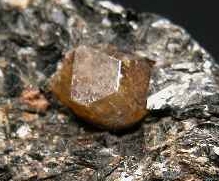|
Using the Uranium-thorium-helium dating technique the authors of the Nature Geoscience paper showed that the Zircon crystals in question were transported to the Earth's crust by basalt eruptions.
Uranium-thorium dating, also called thorium-230 dating technique, is unlike other ratiometric dating techniques, in that it calculates age from the degree to which the equilibrium between Thorium-230 isotope and Uranium-234 has been restored within the sample. Thorium-230 is the product of Uranium-234 decay. But the Thorium-230 is also radioactive with a half-life of 75 thousand years. For this study both Zircons and the host basalt were analysed.
By estimating the Thorium-230/uranium-234 ratio in the sample it proved possible to estimate time the sample had been within the Earth's crust. By comparing the age of the basalt with the age of the zircons it was possible to show that the Zircons were transported to the Earth's surface not earlier that 29 million years ago.
Next the researchers used uranium-lead dating technique to estimate the actual age of the Zircon crystals. Uranium-lead dating, unlike the uranium-thorium dating described above, looks for an end product of the decay of uranium-238 or lead-207 from uranium-235, this product being lead-208. Because Zircon does not naturally incorporate lead atoms into its structure, it can be assumed that the lead content in Zircon is the product of uranium decay. Taking the half-life of uranium and the amount of lead in the Zircon crystals, one can estimate the age of the Zircon. This, in the case of the Bavarian sample, was between 51 and 80 million years. The difference between the uranium-thorium dating and the uranium-lead dating suggests that the Zircon remained intact in the Earth's upper mantle for up to 60 million years. Although Zircon is well known for its durability, this research further demonstrates the ability of Zircon to exist despite extreme geological conditions. As this analysis has shown, Zircons can even survive the pressure and temperatures of the Earth's mantle.
1. Wolfgang Siebel, Axel K. Schmitt, Martin Daniík, Fukun Chen, Stefan Meier, Stefan Wei and Sümeyya Erolu. Prolonged mantle residence of zircon xenocrysts from the western Eger rift. Nature Geoscience 2009, 2, pp. 886 - 890.
| 
